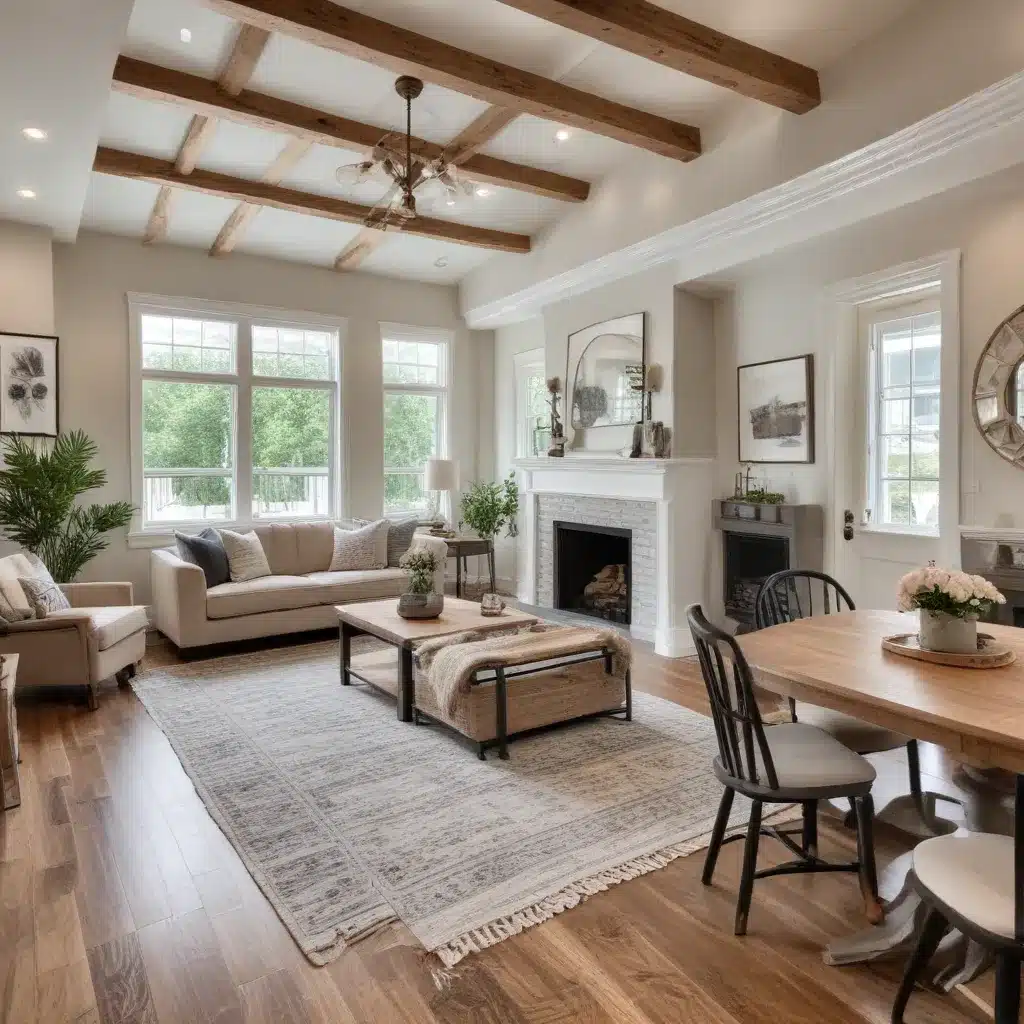As an experienced home improvement consultant, I know that creating a cohesive style throughout your home can be a challenging task, especially during a renovation. With diverse design preferences, budgets, and functional needs, it’s easy for a home to end up feeling disjointed or lacking in visual harmony. However, with the right strategies and a thoughtful approach, you can achieve a cohesive aesthetic that reflects your personal style and ties your entire home together seamlessly.
Defining Cohesive Style
Cohesive style refers to the intentional integration of design elements, colors, textures, and architectural features that create a sense of unity and flow throughout a living space. This doesn’t mean every room has to be an identical clone; rather, it’s about establishing a coherent design language that ties the various spaces together, even as you incorporate diverse styles and personal touches.
Importance of Cohesive Style
Achieving cohesive style is crucial for several reasons. Firstly, it creates a sense of visual harmony, making your home feel intentional, sophisticated, and polished. Secondly, it can actually make your spaces feel more expansive and connected, even in smaller homes. Thirdly, a cohesive aesthetic adds tremendous value to your property, as it demonstrates thoughtful planning and attention to detail – both highly desirable qualities for potential buyers.
Factors Influencing Cohesive Style
Several key factors can influence the cohesive style of your home, including your personal design preferences, the architecture of your space, the materials and finishes you select, and the flow between different areas. It’s important to consider all of these elements holistically, rather than tackling them in isolation.
Home Renovation Challenges
Maintaining a cohesive style can be particularly challenging during a renovation, as you’re often juggling multiple spaces, new and existing elements, and a diverse range of personal preferences. Let’s explore some of the common renovation-related hurdles and how to overcome them.
Maintaining Consistency
One of the biggest challenges is ensuring consistency across your home, especially when renovating in phases or tackling one room at a time. It’s easy for design decisions to become disjointed or for new elements to clash with existing ones. Careful planning, strategic material selections, and a clear vision for your overall aesthetic can help you maintain a cohesive thread throughout the renovation process.
Addressing Diverse Spaces
Homes often contain a wide variety of spaces, from cozy bedrooms to open-concept living areas to utilitarian spaces like laundry rooms. Blending these diverse environments into a cohesive whole can be tricky, but not impossible. Identifying unifying design elements, such as color palettes, architectural features, or material choices, can help tie everything together.
Integrating New and Existing Elements
Seamlessly integrating new design elements with existing ones is another common challenge. Whether you’re keeping some of your cherished furnishings or incorporating salvaged materials, finding ways to incorporate these pieces in a way that complements your overall vision is key. Careful editing, strategic placement, and creative repurposing can help bridge the old and the new.
Design Strategies for Cohesion
To achieve a cohesive style throughout your home renovation, consider implementing the following design strategies:
Establishing a Color Palette
Choosing a cohesive color palette is one of the most impactful ways to unify your spaces. Select a range of complementary colors that can be repeated throughout your home, either as dominant hues or as accents. This doesn’t mean every room has to be the same color, but rather that the colors work together harmoniously.
Incorporating Complementary Textures
In addition to color, incorporating a variety of complementary textures can also contribute to a cohesive aesthetic. For example, you might pair smooth, glossy surfaces with rustic, natural materials, or balance sleek, contemporary elements with soft, plush fabrics. The key is to create visual interest while maintaining a sense of overall unity.
Consistent Architectural Features
Maintaining consistent architectural features, such as moldings, trim work, door styles, and lighting fixtures, can be a powerful way to tie your spaces together. Even subtle repetition of these elements can create a cohesive flow from room to room.
Practical Implementation Tips
Now that we’ve explored the conceptual foundations of cohesive style, let’s dive into some practical tips for implementing these strategies during your home renovation:
Coordinating Material Selections
When selecting materials for your renovation, consider how they will work together across different spaces. For example, if you choose a specific marble tile for your kitchen backsplash, look for ways to incorporate that same material or a complementary natural stone in your bathrooms or other areas. Consistent material choices create a seamless visual connection.
Transitioning Between Spaces
Thoughtful transitions between rooms and spaces can also contribute to a cohesive aesthetic. Consider the flow of movement through your home and how your design choices will guide the eye from one area to the next. Subtle design elements, such as archways, pocket doors, or even a change in flooring, can help delineate spaces while maintaining a sense of continuity.
Balancing Functionality and Aesthetics
While achieving a cohesive style is important, it’s equally crucial to ensure that your renovation choices prioritize functionality and meet the practical needs of your household. Strike a balance between your design aspirations and the realities of how you and your family will use the space. Thoughtful planning and communication with design professionals can help you find the sweet spot between form and function.
By carefully considering the factors that influence cohesive style, addressing common renovation challenges, and implementing strategic design strategies, you can create a harmonious and visually captivating home that reflects your unique personality and lifestyle. Remember, the journey to a cohesive renovation is a rewarding one, so embrace the process and enjoy the transformation of your living spaces. For more inspiration and practical advice, be sure to visit Reluctant Renovator – a valuable resource for homeowners embarking on their own renovation journeys.




